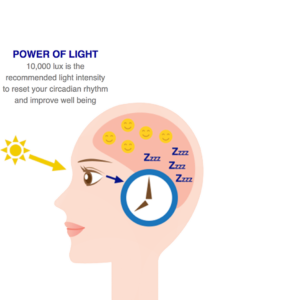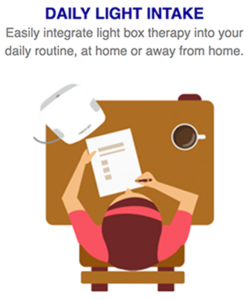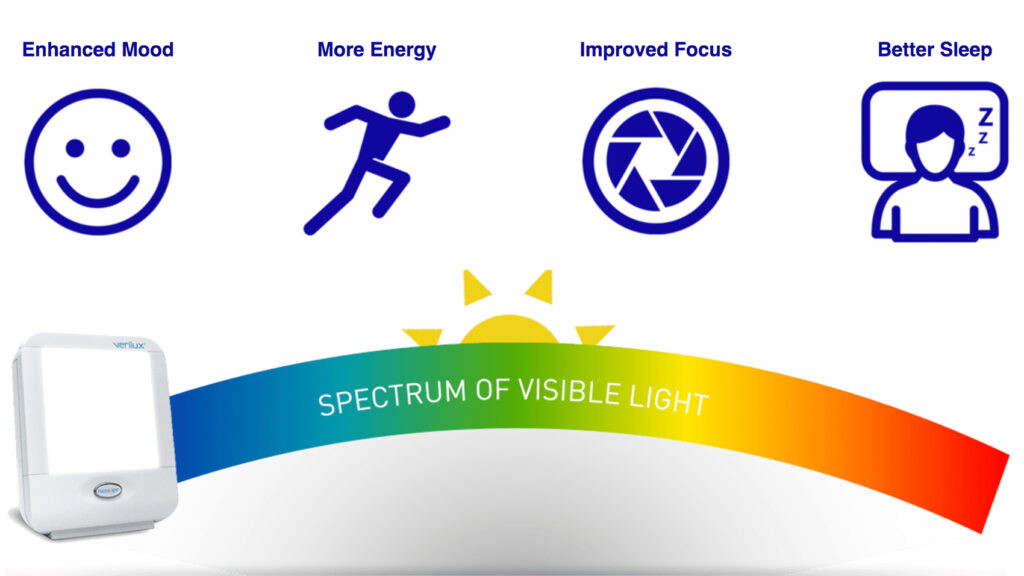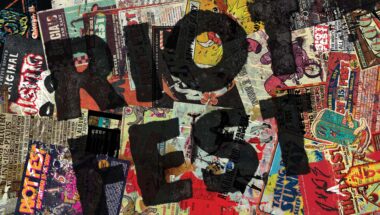For a lot of people, the end of the year drags in a heavy blanket of dread that can stick around until spring finally breaks. We all have our reasons why: the stress of the holidays, the existential angst that comes with marking the close of another year on earth, and, for residents of northerly climes, the absolute mindfuck that comes with not being able to leave your house without experiencing acute physical discomfort for months on end. And for a lot of us, those year-end bummers are made even worse by seasonal affective disorder.
Seasonal affective disorder is the fucking worst. It makes getting out of bed an epic struggle, makes the late-afternoon darkness feel like the end of the world, and makes the few short hours in between feel like you’re being smothered by a thick grey fog of shitty feelings. For people who have severe seasonal affective disorder, or experience it in combination with pre-existing depression or anxiety issues, it can make simply existing a struggle for a large chunk of the calendar year.
I know this well. I get SAD like a motherfucker. Typically in the past there would be a point around late each January where I realized that I hadn’t left my block in several weeks, and it wasn’t just the Chicago weather keeping me inside. My head would feel like it was stuffed with dryer lint. My sleep schedule would become totally unmoored, and I’d end up with maybe a couple of hours of what passes for sunlight in late-winter afternoons. My whole world felt like it was sculpted out of the disgusting grey slush that covered the sidewalks.
Seasonal affective disorder is the product of a whole system of factors, from our mental health and mood to our circadian rhythms going haywire to the unhealthy food and booze consumption that the holidays entail. Fortunately, for such a complex problem, it has a solution that’s almost ridiculously simple and attainable: shoving your face into a glowing white box of artificial sunlight.
 For the past couple winters I’ve been treating what people who don’t experience SAD blithely refer to as the “winter blues” with the Verilux HappyLight Deluxe Light Therapy Lamp, which kicks out a whopping 10,000 lux of full-spectrum simulated sunshine. Every morning, starting around when clocks fall back an hour, I spend the first half hour of my day sitting at my table with the HappyLight in front of me, basking in its blinding therapeutic glow.
For the past couple winters I’ve been treating what people who don’t experience SAD blithely refer to as the “winter blues” with the Verilux HappyLight Deluxe Light Therapy Lamp, which kicks out a whopping 10,000 lux of full-spectrum simulated sunshine. Every morning, starting around when clocks fall back an hour, I spend the first half hour of my day sitting at my table with the HappyLight in front of me, basking in its blinding therapeutic glow.
Getting up close to the HappyLight–or your preferred light therapy box–is key to making it work. So is doing it first thing when you wake up. So is making sure you do it for a solid 20-30 minutes each day. So is making sure that you do it each and every day and don’t stop using it once you start feeling better. (It’s also a good idea to get regular exercise and watch your alcohol consumption.)
But if used correctly, a light therapy box is like a mental power washer, blasting away that nasty mental residue in a torrent of healing photons. For me, the effects are immediate. I feel less exhausted, more focused, and in enough of a better overall mood to justify the product’s goofy, promise-laden name. The effects last, too. If you can measure the effectiveness of a SAD treatment by whether or not when 6pm comes around you’re in bed with the covers pulled over your head, I’d say it’s a winner.*
 The HappyLight Deluxe Light Therapy Lamp is a bit of an investment. There are more affordable models out there, as well as schematics for building your own light therapy box for a fraction of the HLDLTL’s $199.99 sticker price. I recommend spending it anyhow because a) I don’t know how wiring works and b) the key to effective light therapy seems to be getting a sufficient amount of light, and the HLDLTL really kicks it out. If you use it for three solid months in a year (I definitely use it at least that long) it works out to about $2 a day to feel substantially less shitty, which feels like a real steal when I think about my painful pre-HappyLight winters.
The HappyLight Deluxe Light Therapy Lamp is a bit of an investment. There are more affordable models out there, as well as schematics for building your own light therapy box for a fraction of the HLDLTL’s $199.99 sticker price. I recommend spending it anyhow because a) I don’t know how wiring works and b) the key to effective light therapy seems to be getting a sufficient amount of light, and the HLDLTL really kicks it out. If you use it for three solid months in a year (I definitely use it at least that long) it works out to about $2 a day to feel substantially less shitty, which feels like a real steal when I think about my painful pre-HappyLight winters.
In life there are very few problems that have easy solutions, which only makes light therapy being so ridiculously simple and effective (at least for me) just that much better. Being a happy–or at least happier–person is a challenge that all but the most freakishly well-adjusted of us will struggle with throughout our lives, especially around the end of the year. Finding a solution to at least one part of that problem with just the flip of a switch feels straight up magical.
* If it’s not absolutely clear already, I am in no way even close to being a medical professional. I’m speaking only from my experience using light therapy and an afternoon’s worth of Internet research on the subject. Mental health can be tricky to handle, and light therapy may not necessarily work for you.


